Rare coding variants in NOX4 link high ROS levels to psoriatic arthritis mutilans
- PMID: 38379095
- PMCID: PMC10940640
- DOI: 10.1038/s44321-024-00035-z
Rare coding variants in NOX4 link high ROS levels to psoriatic arthritis mutilans
Abstract
Psoriatic arthritis mutilans (PAM) is the rarest and most severe form of psoriatic arthritis, characterized by erosions of the small joints and osteolysis leading to joint disruption. Despite its severity, the underlying mechanisms are unknown, and no susceptibility genes have hitherto been identified. We aimed to investigate the genetic basis of PAM by performing massive parallel sequencing in sixty-one patients from the PAM Nordic cohort. We found rare variants in the NADPH oxidase 4 (NOX4) in four patients. In silico predictions show that the identified variants are potentially damaging. NOXs are the only enzymes producing reactive oxygen species (ROS). NOX4 is specifically involved in the differentiation of osteoclasts, the cells implicated in bone resorption. Functional follow-up studies using cell culture, zebrafish models, and measurement of ROS in patients uncovered that these NOX4 variants increase ROS levels both in vitro and in vivo. We propose NOX4 as the first candidate susceptibility gene for PAM. Our study links high levels of ROS caused by NOX4 variants to the development of PAM, offering a potential therapeutic target.
Keywords: Hydrogen Peroxide; NADPH Oxidase 4 (NOX4); Osteoclast Differentiation; Psoriatic Arthritis Mutilans; Reactive Oxygen Species (ROS).
© 2024. The Author(s).
Conflict of interest statement
LI has served as a consultant and/or paid speaker for and/or participated in clinical trials sponsored by: AbbVie, Almirall, Amgen, Astra Zeneca, BMS, Boehringer Ingelheim, Celgene, Centocor, Eli Lilly, Janssen Cilag, Kyowa, Leo Pharma, Micreos Human Health, MSD, Novartis, Pfizer, Regranion, Samsung, Union Therapeutics, UCB. The remaining authors declare no competing interests.
Figures
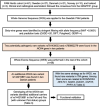



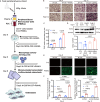
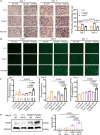

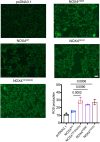

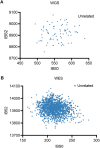
Similar articles
-
SIS3 suppresses osteoclastogenesis and ameliorates bone loss in ovariectomized mice by modulating Nox4-dependent reactive oxygen species.Biochem Pharmacol. 2022 Jan;195:114846. doi: 10.1016/j.bcp.2021.114846. Epub 2021 Nov 18. Biochem Pharmacol. 2022. PMID: 34801525
-
NADPH oxidase 4 promotes cisplatin-induced acute kidney injury via ROS-mediated programmed cell death and inflammation.Lab Invest. 2018 Jan;98(1):63-78. doi: 10.1038/labinvest.2017.120. Epub 2017 Nov 6. Lab Invest. 2018. PMID: 29106395
-
NADPH oxidase 4 is dispensable for skin myofibroblast differentiation and wound healing.Redox Biol. 2023 Apr;60:102609. doi: 10.1016/j.redox.2023.102609. Epub 2023 Jan 13. Redox Biol. 2023. PMID: 36708644 Free PMC article.
-
Adventitial Fibroblast Nox4 Expression and ROS Signaling in Pulmonary Arterial Hypertension.Adv Exp Med Biol. 2017;967:1-11. doi: 10.1007/978-3-319-63245-2_1. Adv Exp Med Biol. 2017. PMID: 29047077 Review.
-
NADPH Oxidase 4 (NOX4) in Cancer: Linking Redox Signals to Oncogenic Metabolic Adaptation.Int J Mol Sci. 2022 Feb 28;23(5):2702. doi: 10.3390/ijms23052702. Int J Mol Sci. 2022. PMID: 35269843 Free PMC article. Review.
Cited by
-
NOX2 mediates NLRP3/ROS facilitating nasal mucosal epithelial inflammation in chronic rhinosinusitis with nasal polyps.Heliyon. 2024 Sep 17;10(18):e38029. doi: 10.1016/j.heliyon.2024.e38029. eCollection 2024 Sep 30. Heliyon. 2024. PMID: 39328569 Free PMC article.
-
[Advances in the Application of Nanozymes in Joint Disease Therapy].Sichuan Da Xue Xue Bao Yi Xue Ban. 2024 Jul 20;55(4):800-806. doi: 10.12182/20240760105. Sichuan Da Xue Xue Bao Yi Xue Ban. 2024. PMID: 39170029 Free PMC article. Review. Chinese.
-
Emerging Contaminants: An Important But Ignored Risk Factor for Psoriasis.Clin Rev Allergy Immunol. 2025 Mar 23;68(1):33. doi: 10.1007/s12016-025-09043-4. Clin Rev Allergy Immunol. 2025. PMID: 40121604 Review.
-
The Genetic Puzzle of the Stress-Induced Cardiomyopathy (Takotsubo Syndrome): State of Art and Future Perspectives.Biomolecules. 2025 Jun 24;15(7):926. doi: 10.3390/biom15070926. Biomolecules. 2025. PMID: 40723798 Free PMC article. Review.
References
-
- Ameur A, Dahlberg J, Olason P, Vezzi F, Karlsson R, Martin M, Viklund J, Kahari AK, Lundin P, Che H et al (2017a) The SweGen variant frequency data. https://swefreq.nbis.se/
MeSH terms
Substances
Grants and funding
LinkOut - more resources
Full Text Sources
Medical
Molecular Biology Databases
Research Materials
Miscellaneous

